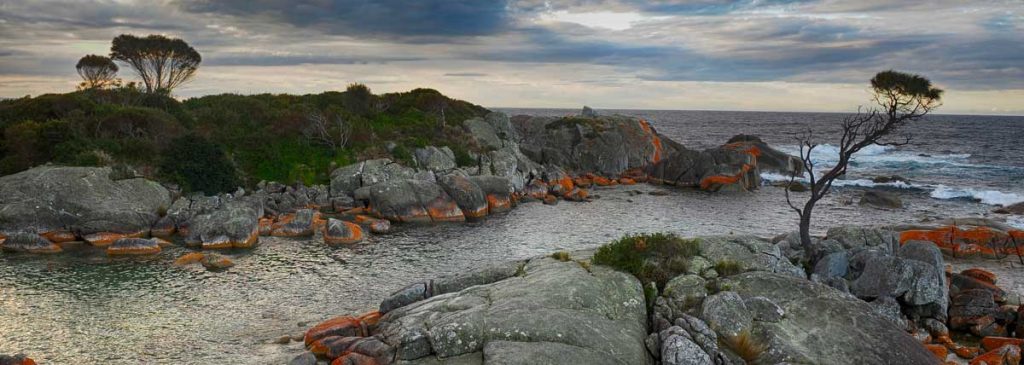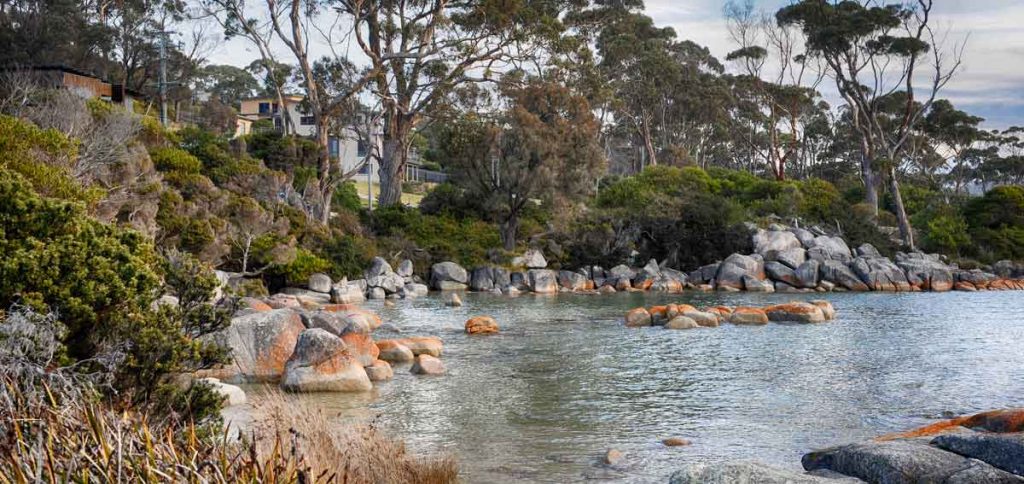
The Bay of Fires at Binnalong Bay
About two and a half hours’ drive from Launceston, the Bay of Fires makes for the perfect weekend get-away. An easy way to get here from Launceston is to simply take the A3, also called the Tasman Highway, to St Helens on Tasmania’s northeastern coast.
The Bay of Fires offers the perfect beach experience, where you will be sure to find a beach that you can have all to yourself. The abundant marine life and excellent visibility make the waters here a diving and snorkelling paradise. If you want more action, you’ll find some great surf spots too, while kayaking, boating and fishing are popular with visitors as well.

Binnalong Bay
A must when you visit is to go on long walks along the shore, whether you do it on your own or as part of a guided four-day trek. You will see wildlife such as Forester kangaroos, Bennett’s wallabies, wombats, echidnas and, at night, possums and Tasmanian devils. Bring your binoculars for birdwatching but even more importantly, bring your camera: The splashes of orange on the granite rocks are courtesy of lichens and they make it nearly impossible to take a photograph that won’t impress your friends.
There are many different accommodation options along the Bay of Fires. At Binalong Bay, for instance, you can choose from options such as a luxury treetop suite or a self-contained cottage. Basic camping facilities are available near Eddystone Point in the Mount William National Park on the northern end of the bay; at Policemans Point in the Bay of Fires Conservation Area along the bay’s middle section; and at Grants Lagoon, at Round Hill near Jeanneret Beach, at Swimcart Beach, at Cosy Corner, at Sloop Reef and at Sloop Lagoon and Big Lagoon, all of which are in the southern section of conservation area between The Gardens and Binalong Bay. Because the area is so remote, it’s important to stock up on food, drinking water, firewood and other camping essentials at St. Helens and to fill your car’s petrol tank too.

Bay of Fires
When Tobias Furneaux named the Bay of Fires in 1773, he surely must have seen the fiery orange rocks that form such a picture-perfect contrast to the white, sandy beaches and the impossibly blue water. However, his inspiration for the name came from a different source: the fires that the Aboriginal people made on the beaches.
For the area’s original inhabitants, the bay was called Larapuna. It was a meeting place for the Panpekanner, Leenerrerter and Pinterrairer people, whose shell middens can still be found all along the shore. European settlers moved in during the 19th century and used the area for farming sheep, cutting timber and fishing. By the middle of the 20th century, Binalong Bay at the southern end of the Bay of Fires had become a tiny fishing village.

Binnalong Bay
For the northern section of the Bay of Fires, you’ll need a valid Parks Pass to enter the Mount William National Park. Get yours online, on board the Spirit of Tasmania ferry or at the Mount William National Park’s Visitor Centre in St Helens. You can also get a Parks Pass at the accredited Travel Information Centre or Service Tasmania shop in St Helens.
Read any list of must-see destinations in Tasmania and the Bay of Fires will be somewhere near the top. It’s no wonder really, because here you’ll find a stretch of more than 50 km of unspoilt coastal paradise.

Evening Approaches along the Bay of Fires
